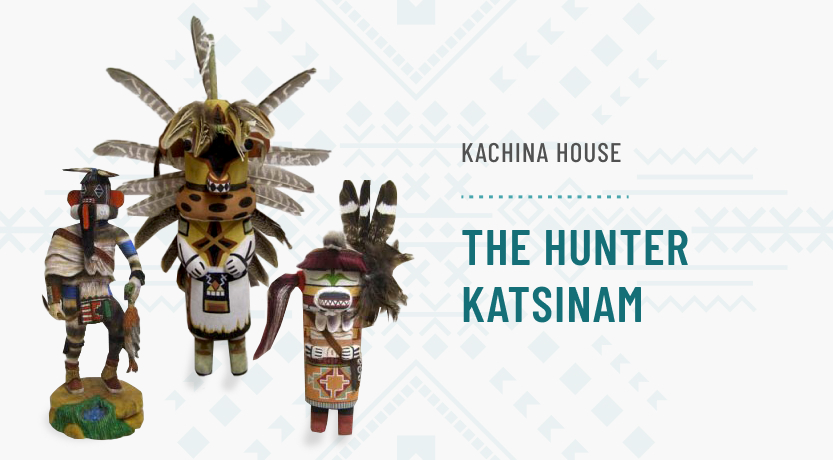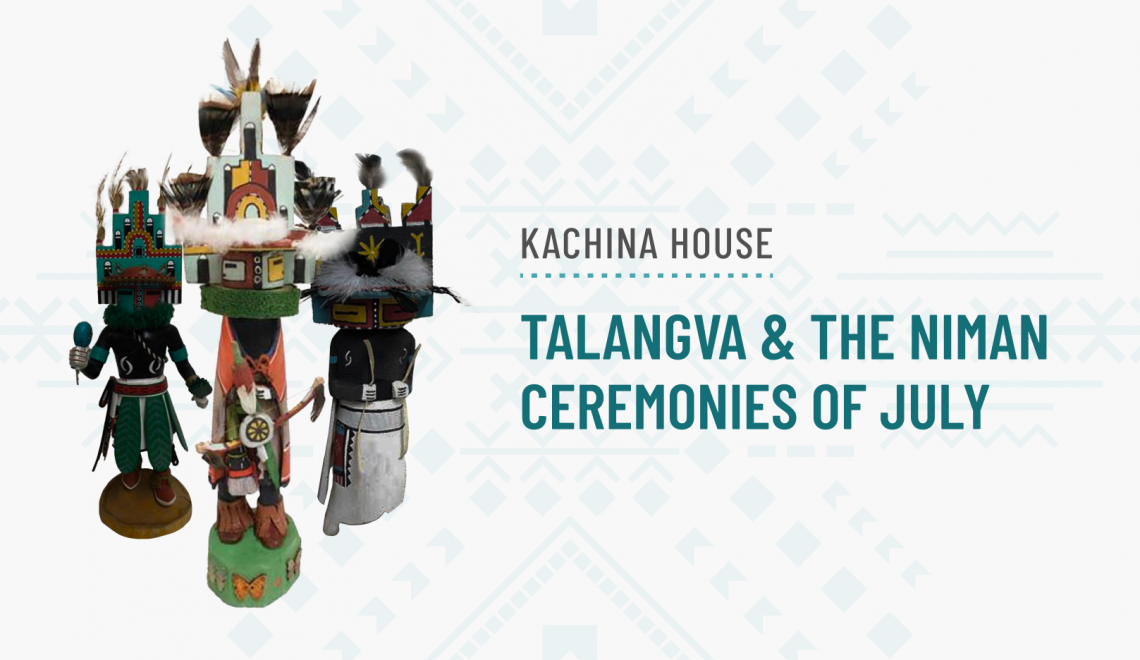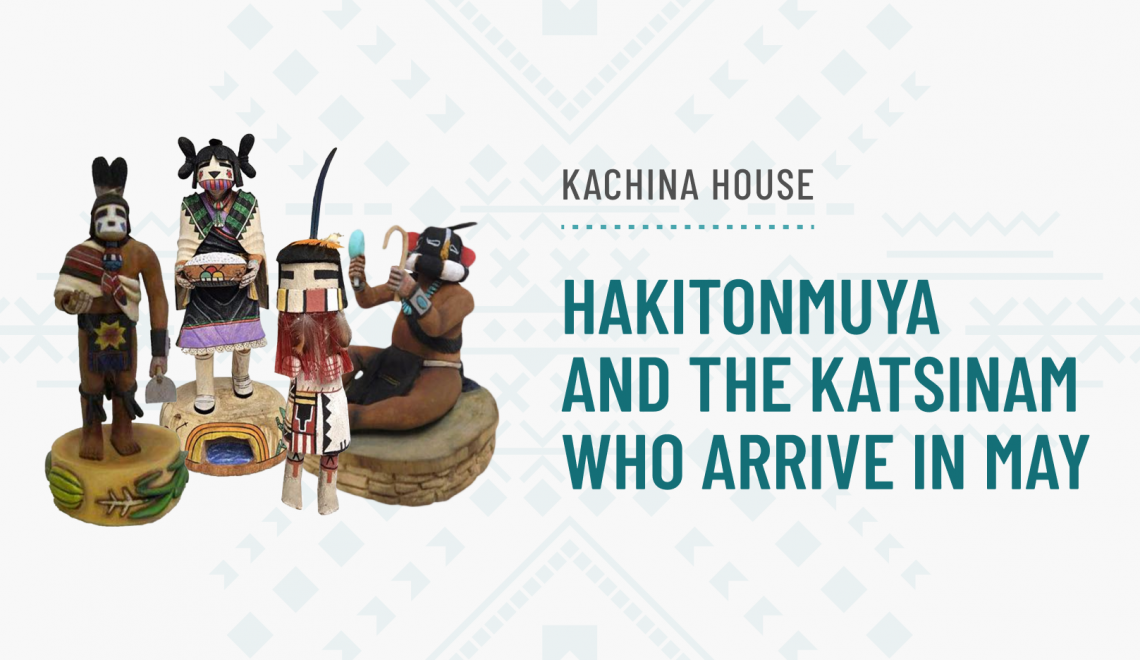
Updated May 2024
Also called “the waiting season,” Hakitonmuya occurs in May and begins the planting season. Although it is too early for most crops to be planted, bean, pumpkin and watermelon seeds can be put into the soil, symbolizing the start of growing season.
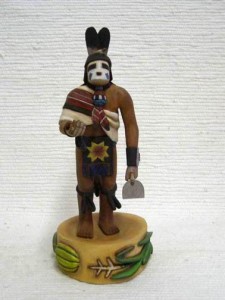 The scattering of these crops is a special occasion, and a variety of Katsinam are called upon to celebrate and bless this first planting. With the weather warming up, dances can finally be performed on the village plaza, and Katsinam like Kokopelli and Paski can be seen dancing and sharing their prayers with the villagers.
The scattering of these crops is a special occasion, and a variety of Katsinam are called upon to celebrate and bless this first planting. With the weather warming up, dances can finally be performed on the village plaza, and Katsinam like Kokopelli and Paski can be seen dancing and sharing their prayers with the villagers.
The Planting Katsina
Called Paski, the Planting Katsina comes to the Hopi villages carrying a hoe to assist with planting. A figure that can be seen during Hakitonmuya, he also brings seeds to help the people during this first planting of the season.
The Rain Dancer Katsina
A Katsinam that appears during many Hopi celebrations, the Longhair – Angak’china – originated with the Zuni people. He brings a gentle rain with him to encourage crops to grow and is one of the most popular Katsinam, often arriving in a group to sing and dance.
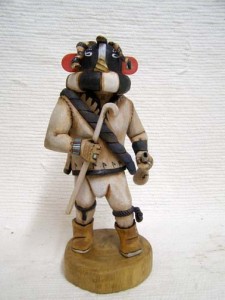 The Fertility Katsina
The Fertility Katsina
A flute playing Katsinam, the Fertility Katsina is known by the name Kokopelli. He is a magical being who, by playing his flute, calls the clouds to make rain. Today, the Hopi play flutes over the springs to attract rain. Kokopelli is also a symbol for fertility because he carries seeds and mist in his hump.
Hakitonmuya Duties
The Hopi people come together during Hakitonmuya, with specific tasks assigned to the men and the women of the village. The women spend much of their time grinding corn into a very fine meal called ngumni which is then used to create breads, puddings and more.
As the women prepare the food, the men prepare for the seasonal ceremonies to come, as well as hunting and tending to crops and livestock to ensure a healthy and stable growing season.
Exploring Hopi Ceremonies
The Hopi ceremonial calendar divides the year into the Katsina season and non-Katsina season, organized around the movements of the Sun and Moon. Each season is marked by distinct ceremonies that align closely with the monthly cycle. For instance, the non-Katsina season encompasses the warmer months from August to November, filled with regular harvesting and celebratory dances. In contrast, the colder months usher in the Katsina season starting with the Kyaamuya ceremony in December when spiritual preparations intensify and Katsina spirits are welcomed to guide the community through winter.
This seasonal rhythm culminates with the Talangva in July, recapping the vibrant Katsina season with the Niman ceremony, which celebrates crop harvest and offers blessings to the community’s brides. These ceremonies are not simply cultural events, but are vital to the spiritual and agricultural life of the Hopi, maintaining a deep connection with their environment. For an in-depth understanding of how these traditions shape daily life and Hopi agriculture, check out our Hopi Ceremonial Calendar page.
Home to a large collection of Katsina dolls and other Native American art, Kachina House is the perfect place to visit if you are in search of a Hopi carved item this Katsina Season. Shop with us online or contact us by phone at 866-587-0547 for help finding a specific piece.
Sources: https://peabody.harvard.edu/galleries/rainmakers-gods-ceremonies-hakitonmuya-plaza-dances-footraces , https://www.kachinahouse.com/hopi-calendar


